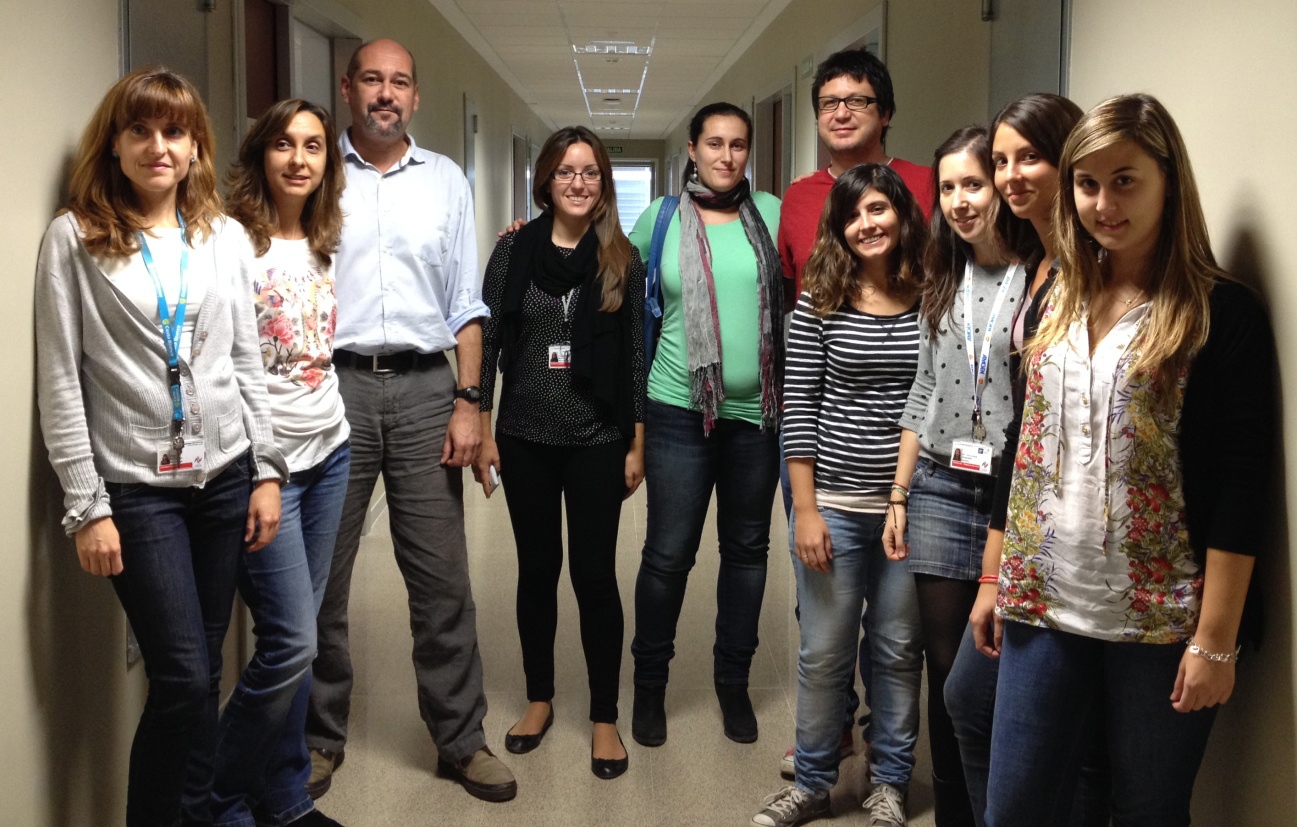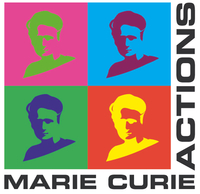The WormLab
Mendelian genetic diseases are caused usually by mutations in a single gene. However, patients of a given disease have wide variability in the severity and the age-at-onset of the disease. We, and many other researchers, believe that other mutations within the genome of patients modulate the strength with which the disease affects each patient. Our aim is to find such modifier genes which in turn may point out potential therapeutic approaches.
The WormLab is part of the Research Group in Molecular, Cellular and Genomic Biomedicine, led by Dr. JM Millán, at the Health Research Institute La Fe (IIS-La Fe, Valencia). This research group is devoted to undercover genes and pathways implicated in a range of rare diseases, such as the Usher Syndrome, retinopathies and neurodegenerative diseases. Our team works in tight collaboration with clinical and basic researchers, to deepen the knowledge about the physiology, genetics and clinical of these diseases. In the WormLab we use the worm nematode Caenorhabditis elegans as a tool to study of the molecular basis of neurodegenerative disease and other genetic conditions.

Among other projects the WormLab has been awarded with a Marie Skłodowska-Curie Grant, from the 7th Frame Program of the European Commission (»Mechaggreganamics«). This project aims at create new models of the Huntington's disease, a devastating condition caused by mutant huntingtin. Also, we search for genes that modulate the toxic processes raised by genes encoding abnormal expansions of triplets, such as the CAG expansion in the first exon of the mutant Htt gene.
Links
Contact details
- Rafael Vázquez-Manrique, PhD
- Fellow of the "Miguel Servet" Program
- Laboratorio de Biomedicina Molecular, Celular y Genómica
IIS-Hospital La Fe
Avda. de Fernando Abril Martorell, nº 106.
46026 Valencia, Spain - +34 961 246 677
+34 961 246 675
rafael_vazquez(ELIMINAR)@iislafe.es
Publicaciones
2014
- Nagy AI#, Vázquez-Manrique RP#, Lopez M, Christov C, Sequedo MD, Herzog M, Herlihy AE, Bodak M, Gatsi R, Baylis HA. IP3 signalling regulates exogenous RNAi in Caenorhabditis elegans. EMBO Reports (in press). (# authors contributed equally).
- Tourette C, Farina F, Vazquez-Manrique RP, Voisin J, Orfila AM, Hernandez S, Offner N, Parker JA, Menet S, Kim S, Lyu J, Choi SH, Cormier K, Edgerly CK, Bordiuk OL, Smith K, Louise A, Halford A, Stacker S, Vert JP, Ferrante RJ, Lu W and Neri C. The Wnt Receptor Ryk Reduces Neuronal and Cell Survival Capacity by Repressing FOXO Activity in C. elegans and Cellular Models of the Early Phases of Mutant Huntingtin Pathogenicity. PLoS Biol 12(6): e1001895. doi:10.1371/journal.pbio.1001895
- Doménech-Carbó A, Cebrián-Torrejón G, de Miguel L, Tordera V, Rodrigues-Furtado D, Assad-Kahn S, Fournet A, Figadère B, Vázquez-Manrique RP and Poupon E. ssDNA, G-quadruplex DNA, and nucleosomal DNA electrochemical screening using canthin-6-one alkaloid-modified electrodes. Electrochimica Acta. 2014. 115: 546-552.
2013
- Cebrián-Torrejón C, Mackiewicz N, Vázquez-Manrique RP#, Fournet A, Figadère B, Nicolas J and Poupon E. Solution phase and nanoparticular biosynthetically inspired interconnections in the canthin-6-one B-carboline series and study of phenotypic properties on C. elegans. Eur. J. Org. Chem. 2013. 26:5821–5828
2012
- van der Goot AT, Zhu W, Vázquez-Manrique RP, Seinstra RI, Dettmer K, Michels H, Farina F, Krijnen J, Melki R, Buijsman RC, Ruiz Silva M, Thijssen KL, Kema IP, Neri C, Oefner PJ, Nollen EA. Delaying aging and the aging-associated decline in protein homeostasis by inhibition of tryptophan degradation. Proc Natl Acad Sci U S A. 2012 Sep 11;109(37):14912-7.
- Parker JA#, Vazquez-Manrique RP#, Tourette C, Farina F, Offner N, Mukhopadhyay A, Orfila AM, Darbois A, Menet S, Tissenbaum HA, Neri C. Integration of β-catenin, sirtuin, and FOXO signaling protects from mutant huntingtin toxicity. J Neurosci. 2012 Sep 5;32(36):12630-40. (# authors contributed equally).
- Baylis HA, Vázquez-Manrique RP. Genetic analysis of IP3 and calcium signalling pathways in C. elegans. Biochim Biophys Acta. 2012 Aug;1820(8):1253-68.
- Lejeune FX, Mesrob L, Parmentier F, Bicep C, Vazquez-Manrique RP, Parker JA, Vert JP, Tourette C, Neri C. Large-scale functional RNAi screen in C. elegans identifies genes that regulate the dysfunction of mutant polyglutamine neurons. BMC Genomics. 2012 Mar 13;13:91.
2011
- Burnett C, Valentini S, Cabreiro F, Goss M, Somogyvári M, Piper MD, Hoddinott M, Sutphin GL, Leko V, McElwee JJ, Vazquez-Manrique RP, Orfila AM, Ackerman D, Au C, Vinti G, Riesen M, Howard K, Neri C, Bedalov A, Kaeberlein M, Soti C, Partridge L, Gems D. Absence of effects of Sir2 overexpression on lifespan in C. elegans and Drosophila. Nature. 2011 Sep 21;477(7365):482-5.
- Baylis HA, Vázquez-Manrique RP*. Reverse genetic strategies in Caenorhabditis elegans: towards controlled manipulation of the genome. ScientificWorldJournal. 2011 Jul 7;11:1394-410. (*corresponding author).
- Disruption of the ATP-binding cassette B7 (ABTM-1/ABCB7) induces oxidative stress and premature cell death in Caenorhabditis elegans. González-Cabo P, Bolinches-Amorós A, Cabello J, Ros S, Moreno S, Baylis HA, Palau F, Vázquez-Manrique RP*. J Biol Chem. 2011 Jun 17;286(24):21304-14. (*corresponding author).
2010
- Improved gene targeting in C. elegans using counter-selection and Flp-mediated marker excision. Vázquez-Manrique RP*, Legg JC, Olofsson B, Ly S, Baylis HA. Genomics. 2010 Jan;95(1):37-46. (*corresponding author).
Mechaggreganamics
Marie Curie Career Integration Grants (CIG)

Protein aggregation is a typical trait of a number of neurodegenerative diseases associated with aging. The genes responsible for modulating the aggregation are not completely known. There is an inverse correlation between the number of the CAG triplets within the huntingtin gene, and the age of onset of symptoms in patients of Huntington's disease (HD). However, there is a wide variation in age of onset of the disease, among carriers of short but toxic CAG tandems, which suggests that the genetic background of the patients strongly influences the severity of the disease. Therefore, the objective of this proposal is to generate new in vivo models of HD to find molecules that modulate protein and RNA toxicity and disease progression.
We are generating in vivo models of HD in nematodes which will be used to find disease modulating genes. We are focusing not only in finding genes involved in protein toxicity dynamics, but also in genes that are involved in the toxicity produced by the nascent RNA containing expanded CAG triplets.
Call: FP7-PEOPLE-2012-CIG
Mechanisms of cell dysfunction by aggregation dynamics of polyQ-containing proteins
PI: Rafael Vázquez-Manrique
Technician: Loli Sequedo






